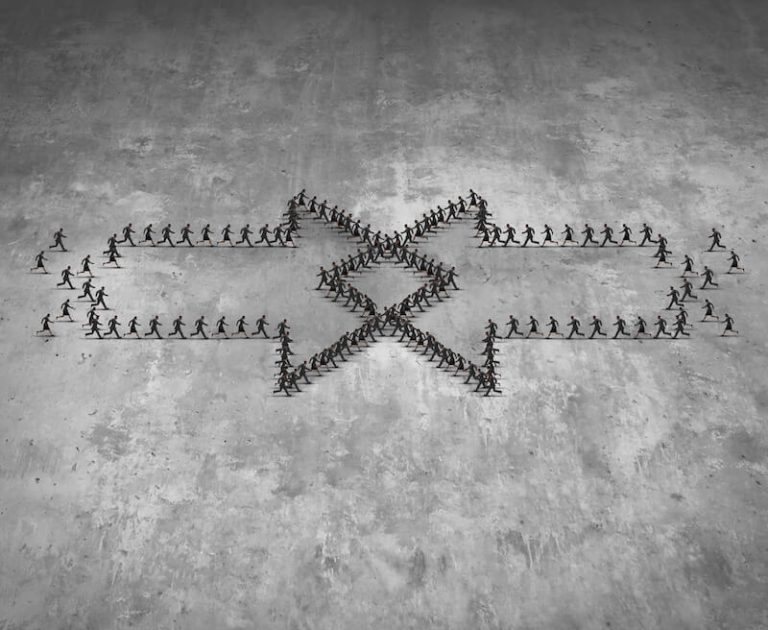I expect the future to be increasingly collaborative, as different partners seek to complement each other’s skills, boost the chances of success, or simply to manage risk. Having increased our focus on working with startups this year, I expect both us at Kids Industries and colleagues around us will explore more participatory business models going forward. This has benefits in shared access to knowledge, technology and capital, but is also a great way to support the community around us.
Please describe your job: What do you do?
I then do my focused work, and the days can be very varied – from analysing market trends to reviewing and preparing research reports, working on brand strategies or business models for new products.

Talk us through a typical day…
My day typically starts a good couple of hours before I need to do anything. I find this early morning moment quite precious in that it’s free of expectations and external pressure; it’s time to refresh and set up. I will often go out for a walk, work out in some way, read a little bit – but really, what I do almost doesn’t matter, as long as I’ve had some time before the rhythm of the day takes over.
The pandemic has had families scramble to figure out how to do home schooling, how to explain COVID-19 to children, manage isolation, and then manage ‘back to school’. Behaviours changed, and we expect some of these changes to be “stickier” than others, such as the increased acceptance and understanding of socialising digitally. Whilst a thought that would make many a parent frown in concern this time last year, they have now had a chance to experience it firsthand and appreciate that the platforms do offer some benefits. Similarly, the use of technology in education, in creativity, and some of the new, more value-led evaluation criteria for brands, will likely remain.
I’d say we need to be very careful about jumping on bandwagons. Every period of bigger societal shifts presents opportunities to ‘jump on’, but it’s essential to assess these opportunities against audience needs and brands’ objectives. Marketing strategies that start with ‘everyone is doing it’ are very likely to be wrong.
If I can say so myself, I’m really proud of my team for managing the transition to online research – whilst the concept is nothing new, it’s a completely different ball game when your audience is five years old … and it’s a challenge they worked through masterfully.
How do you maintain an effective work/life balance?
Our clients’ customers – families and children – have seen huge changes in their lifestyles, and, arguably, we are yet to experience the real consequences of 2020 on childhood. We actually see a lot of concerned parents in our research, and their worries mainly relate to their children’s social development and social needs, much more so than their education.
Moving forwards, I think an increasing number of our clients will be working with stronger and more data-driven learning models and together we’ll work on developing pilots and prototypes, testing and adapting, learning from the market as opposed to waiting for the ideal moment to launch the perfect, most expensive, zero-risk platform (which, generally, does not exist). This is a fairly standard approach in the tech world, but we’re seeing the models of thinking and production translate to other sectors as they innovate.
How has strategy changed at your company in the past year?
For example, whilst there has been an increase in gaming and multiverse-type engagements where brands build an entire story within a gaming platform, it doesn’t make it right for everyone in every circumstance.
I am responsible for our agency’s strategic and insight output; this includes the direction for the work we produce for our clients, as well as building up the internal knowledge base. Being an expertise-led business it is incredibly important to us to invest in the insight and understanding that our internal teams have – and that means everyone, from strategists, researchers and creatives to operations. Together we create an incredible insight base and then apply it to business problems, new product ideas or comms challenges.
Kids Industries is a research, strategy, and creative agency that specialises in the family market. We recently caught up with Strategy Director Jelena Stosic to find out more about her role. We also chatted about the need for an effective work/life balance, and delved into how the pandemic has impacted Kids Industries’ core audience.
How has customer behaviour (or your clients’ customer behaviour) changed during the pandemic?
A lot of our work involves bringing new ideas and concepts to the market – this could range from a new TV show to a brand to a digital product launch – and my team works very closely with the creative and production teams that carry out the delivery and execution of these ideas. As such, an important part of my day are discussions with our Creative Director, Raj, as we explore both the definition of the problem, and the scope for the solution (Strategy part), the solution itself and how it comes to life (Creative part).
This year has seen us increase our productisation as we’ve had demand from smaller clients and startups for a ‘packaged up’ version of some of our core services. Like everyone else, we’ve also had to take our business practices online, for which we already had a process in place, but we’ve had to undertake some to work on the behaviour and culture part of how it feels to work at Kids Industries, when Kids Industries is online.
What do you predict for the future?
The workday starts with a team stand-up, which has been fantastic during the pandemic in terms of keeping us all connected, but what has been even more important has been the introduction of a “micro LOL” as part of the morning meeting. The “lol” part originally stood for “learn over lunch” – as opposed to laughter – but these days a micro LOL is a 5 minute presentation on virtually anything that different team members choose to speak about as long as it is relevant to our work or important to them. The micro LOLs are quick to prepare and we take turns so every member of the team gets to present. These five-minute presentations have been an important part of what has continued to develop our company culture during the pandemic. There has been endless source of connection and sharing as we hear about each other’s fandoms, their interests, things that they feel passionate about or that are personal to them in some way.
So one of my main realisations in the past couple of years has been that work/life balance is something I actually need to choose to commit to, I can’t just leave it be and expect it to happen well. One of the most effective and enjoyable ways in which I maintain the balance is through proactively dedicating to something else outside of work hours, something completely different that takes my mind in a new direction. For years this has been running, but in the past couple of months I’ve also started attending online classes for improv theatre. The main thing for me is to find something I really enjoy and that I actively want to get better at – this means I’ll give it my full attention.
What advice would you give a marketer right now?
The core of our strategy remains unchanged: our dedication to an audience group (i.e. kids and families) allows us to deliver across the most diverse platforms. Our focus is on the expertise in how to engage and create for children and families, but we stretch this knowledge to working on cruise ships, hotels, video games, subscription products or marketing campaigns for them.
I am the Strategy Director at Kids Industries. We are a full-service agency that specialises in the family market, meaning we identify opportunities and deliver marketing and product solutions for clients whose audiences include children, young people, or their families. Traditionally thought of as mainly focused on the entertainment industry, education and FMCG – the ‘family market’ is actually much bigger and includes technology, finance, travel, NGOs, transport and many more sectors.
Brands must consider what their consumers need or want and work out if it fits their objectives and budget. The same goes for online education, TikTok content, digital creativity and any trend people highlight (including me in this post) – they are all fantastic food for thought and inspiration, but they never trump the audience.




